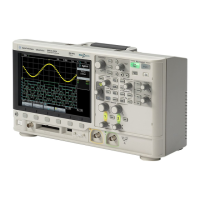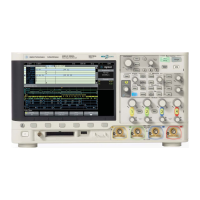330 Agilent X-Series Signal Generators User’s Guide
Custom Digital Modulation (Option 431)
Using Customized Burst Shape Curves
Using Customized Burst Shape Curves
You can adjust the shape of the rise time curve and the fall time curve using the Rise Shape and
Fall Shape editors. Each editor allows you to enter up to 256 values, equidistant in time, to define
the shape of the curve. The values are then resampled to create the cubic spline that passes through
all of the sample points.
The Rise Shape and Fall Shape table editors are available for custom real- time I/Q baseband
generator waveforms.
Understanding Burst Shape
The default burst shape of each format is implemented according to the standards of the format
selected. You can, however, modify the following aspects of the burst shape:
Rise time the period of time, specified in symbols or bits, where the
burst increases from a minimum of −70 dB (0) to full power
(1).
Fall time the period of time, specified in symbols or bits, where the
burst decreases from full power (1) to a minimum of −70 dB
(0).
Rise delay the period of time, specified in symbols or bits, that the start
of the burst rise is delayed. Rise delay can be either negative
or positive. Entering a delay other than zero shifts the full
power point earlier or later than the beginning of the first
useful symbol.
Fall delay the period of time, specified in symbols or bits, that the start
of the burst fall is delayed. Fall delay can be either negative or
positive. Entering a delay other than zero shifts the full power
point earlier or later than the end of the last useful symbol.
User- defined burst shape up to 256 user- entered values which define the shape of the
curve in the specified rise or fall time. The values can vary
between 0 (no power) and 1 (full power) and are scaled
linearly. Once specified, the values are resampled as necessary
to create the cubic spline that passes through all of the sample
points.

